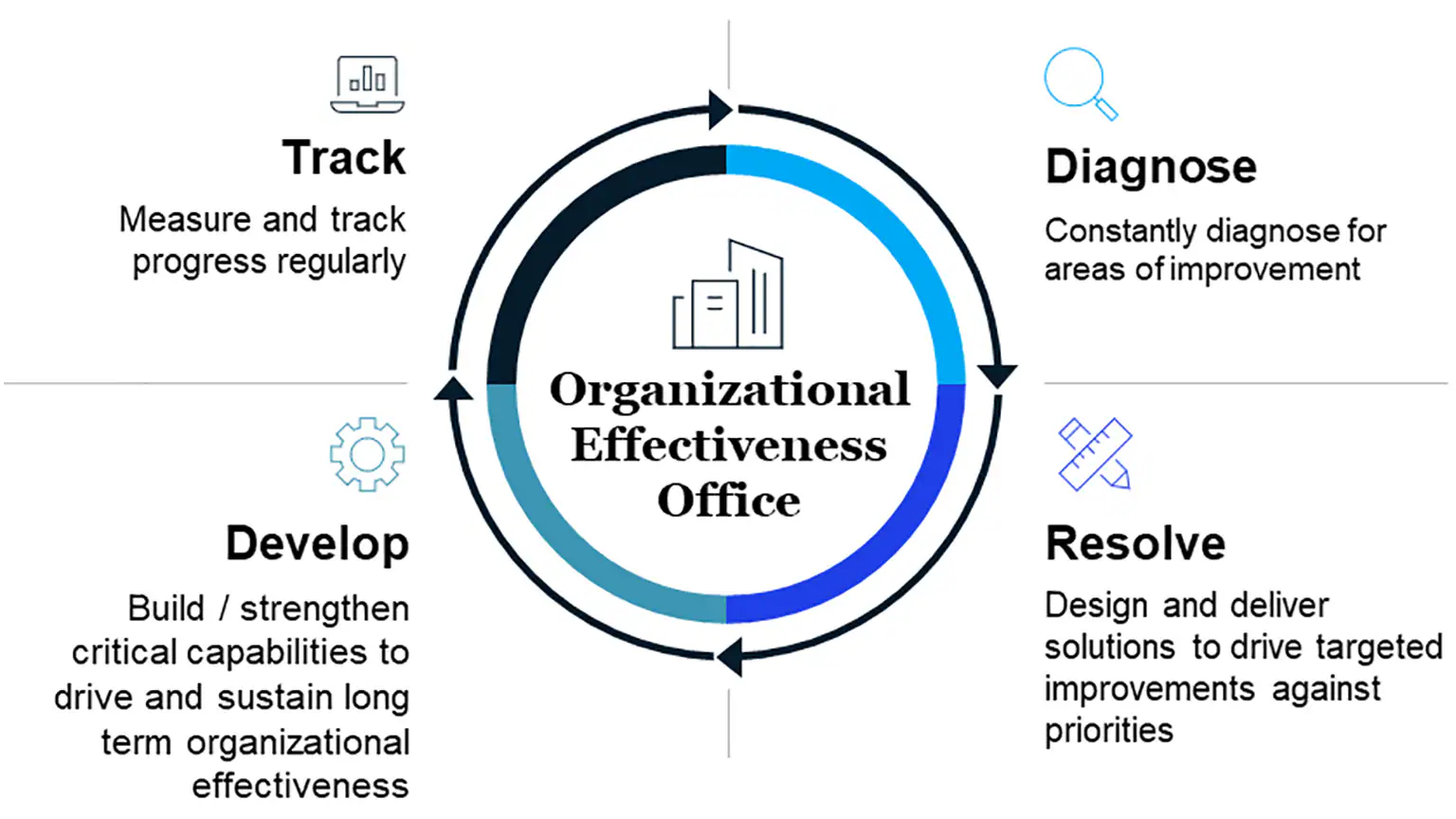Organizational effectiveness is a critical factor in determining the success and longevity of a company. It encompasses the ability of an organization to efficiently utilize its resources, meet its goals, and satisfy its stakeholders. Over the years, various approaches have been developed to measure and enhance organizational effectiveness. One such approach is the establishment of an Organization Effectiveness Office (OEO), which serves as a central hub for driving continuous improvement and addressing pain points within the organization.
The Role of an OEO in Driving Organizational Effectiveness
An OEO typically manages a cadence of four core activities:
- Scanning for pain points and misalignments
- Regularly reviewing organizational processes, structures, and performance metrics to identify areas for improvement
- Gathering feedback from employees, customers, and other stakeholders to uncover hidden issues
- Prioritizing and resolving inefficiencies
- Collaborating with cross-functional teams to develop solutions to identified problems
- Allocating resources and providing support to ensure effective implementation of improvement initiatives
- Driving continuous improvement against implementation roadmaps
- Establishing clear goals, metrics, and timelines for improvement projects
- Monitoring progress and adjusting course as needed to ensure successful outcomes
- Collaborating with executives to identify areas needing additional support
- Providing regular updates to senior leadership on the organization’s effectiveness and health
- Working with executives to prioritize and resource critical improvement initiatives
Examples of OEO Success
As per Mckinsey Insights, several companies have successfully implemented OEOs to drive organizational effectiveness:
- A global technology company
- Established an OEO to streamline its product development process and improve cross-functional collaboration
- The OEO identified bottlenecks in the product pipeline and implemented a new project management system, resulting in a 30% reduction in time-to-market
- A large healthcare provider
- Set up an OEO to enhance patient experience and improve operational efficiency
- The OEO conducted a comprehensive review of patient touchpoints and identified areas for improvement, leading to a 20% increase in patient satisfaction scores
- A multinational consumer goods company
- Implemented an OEO to optimize its supply chain and reduce costs
- The OEO analyzed the company’s logistics network and identified opportunities for consolidation, resulting in a 15% reduction in transportation expenses
The Way Forward
By investing in and empowering an OEO, leaders can help their organizations capture the value of successful operating model transformations and break free from the cycle of endless reorganizations. By focusing on ongoing organizational effectiveness, companies can unlock the potential of their workforce, streamline processes, and drive sustained performance and health in an ever-changing business environment.To build a successful OEO, leaders must ensure clear decision rights, strong leadership commitment, a strong link to business strategy, involvement from business units, and a holistic approach that addresses a range of organizational levers. By embracing the OEO model, organizations can achieve a competitive edge and position themselves for long-term success in today’s dynamic business landscape.











